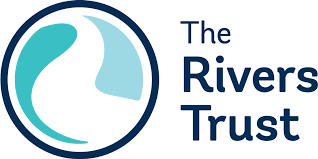State of Our Rivers Report
Our rivers are far from healthy. Restoring rivers is climate action, supports wildlife, protects communities, and is urgently needed.
2024, The Rivers Trust
Almost everything we do on land impacts our rivers. Rivers carry the chemical and physical fingerprint of their local catchments – the land area around rivers from which water drains. They have been polluted, channelised, fragmented by barriers and rarely still follow their natural course. Their current state reflects what we’ve done across their catchments over hundreds of years.
Some forms of pollution are obvious from the riverbank; plastic bottles and crisp packets bobbing in the water, brightly coloured single-use vapes nestled on the riverbed, wet wipes tangled in overhanging vegetation and streams of murky soil washed from fields or grey wastewater from combined sewage overflows (CSOs).
But, looks can be deceiving. Even the clearest looking waters can contain microplastics, industrial chemicals, hydrocarbons, fertilizers and pesticides, and even pharmaceuticals. Untreated sewage spills blight most of our rivers, and even treated wastewater still contains a cocktail of chemicals like pharmaceuticals, pesticides from veterinary flea treatments, nutrients and household cleaning products when it is returned to our waterways.
Getting a clear picture of the state of our rivers is not a simple task – and the issues lie in the availability of data. Across the UK and Ireland, the regulators in each nation monitor water quality and river health in different ways and at different times, making clear-cut comparisons or broad conclusions hard to draw.
However, three things are certain:
2024, The Rivers Trust
Almost everything we do on land impacts our rivers. Rivers carry the chemical and physical fingerprint of their local catchments – the land area around rivers from which water drains. They have been polluted, channelised, fragmented by barriers and rarely still follow their natural course. Their current state reflects what we’ve done across their catchments over hundreds of years.
Some forms of pollution are obvious from the riverbank; plastic bottles and crisp packets bobbing in the water, brightly coloured single-use vapes nestled on the riverbed, wet wipes tangled in overhanging vegetation and streams of murky soil washed from fields or grey wastewater from combined sewage overflows (CSOs).
But, looks can be deceiving. Even the clearest looking waters can contain microplastics, industrial chemicals, hydrocarbons, fertilizers and pesticides, and even pharmaceuticals. Untreated sewage spills blight most of our rivers, and even treated wastewater still contains a cocktail of chemicals like pharmaceuticals, pesticides from veterinary flea treatments, nutrients and household cleaning products when it is returned to our waterways.
Getting a clear picture of the state of our rivers is not a simple task – and the issues lie in the availability of data. Across the UK and Ireland, the regulators in each nation monitor water quality and river health in different ways and at different times, making clear-cut comparisons or broad conclusions hard to draw.
However, three things are certain:
- Our rivers are not healthy – far from it.
- Things haven’t improved since our last report in 2021.
- More data is needed to truly understand the scale of the problems and deploy solutions.


